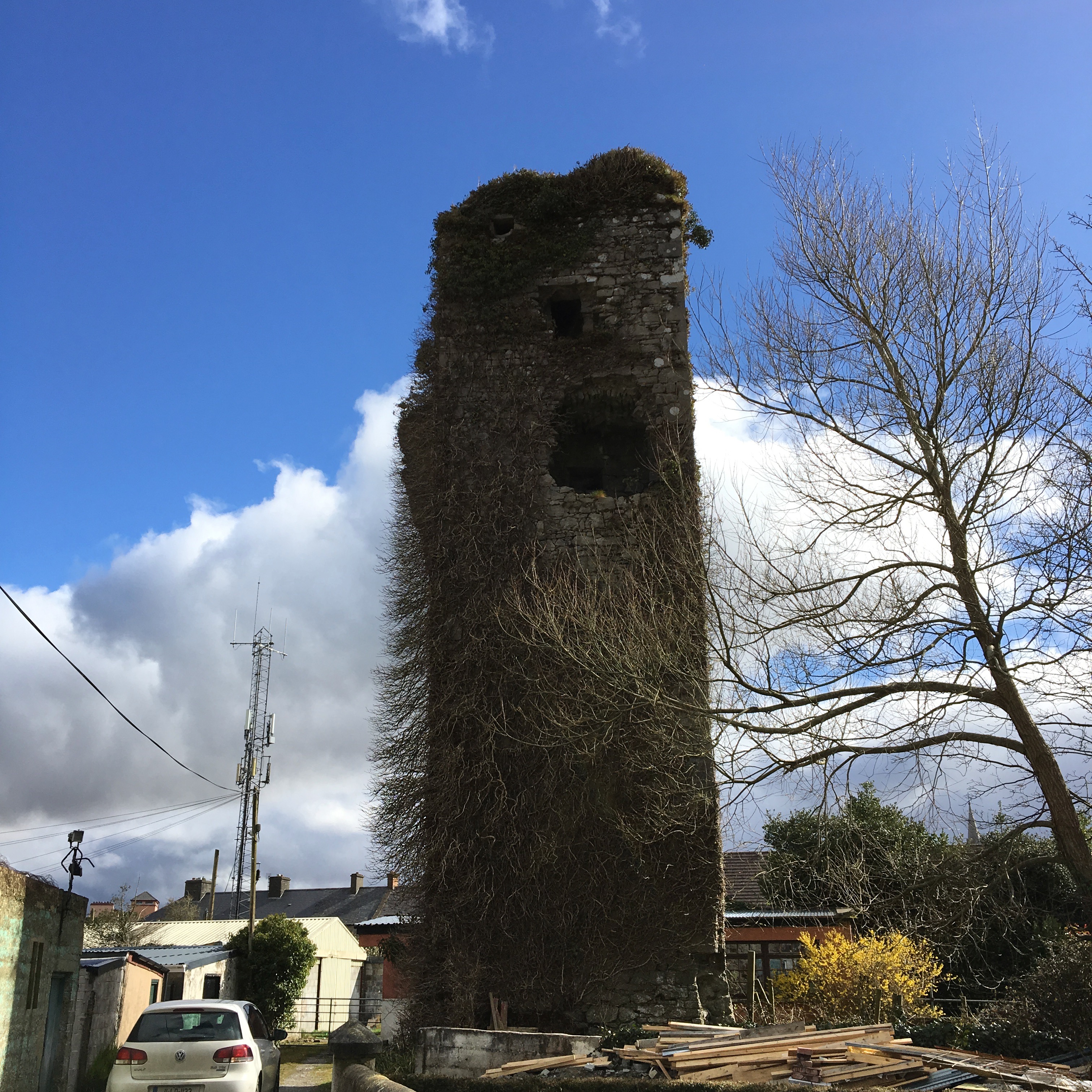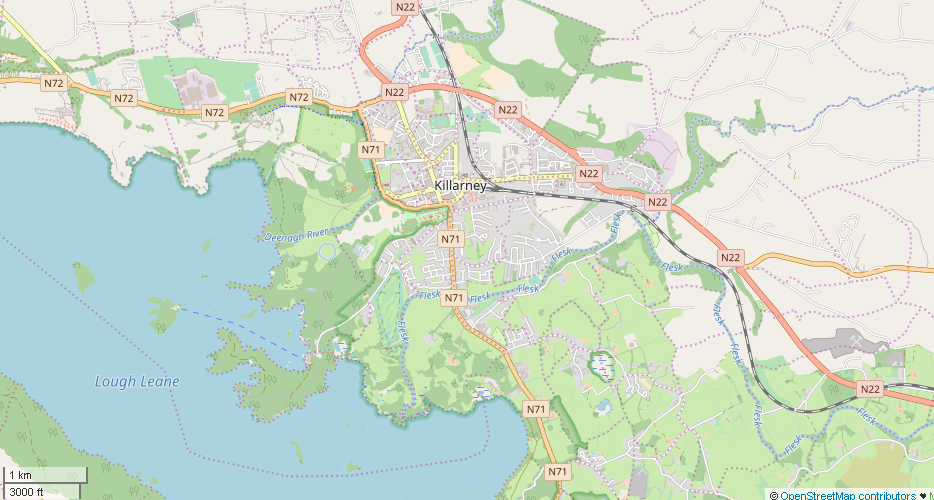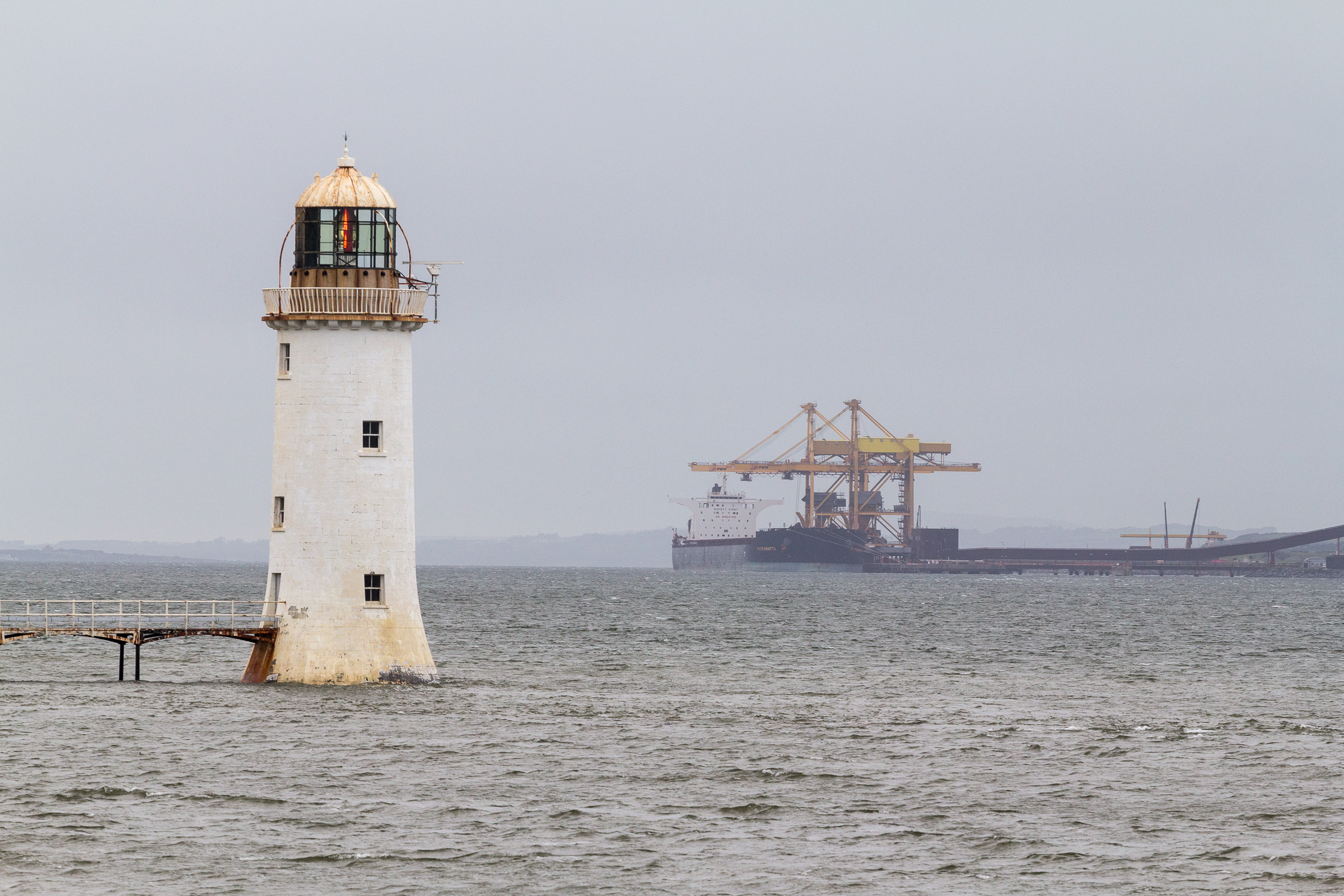|
Dublin Guard
The Dublin Guard was a unit of the Irish Republican Army during the Irish War of Independence and then of the Irish National Army in the ensuing Civil War. Foundation In May 1921 the Active Service Unit of the Irish Republican Army's Dublin Brigade and the "Squad" assassination unit were amalgamated. The Guard was created due to the heavy losses sustained by the Dublin Brigade in their burning of the Custom House on May 25, 1921. Five IRA volunteers were killed in the operation and eighty-three captured. Paddy Daly, previously head of the Squad, was put in command of the new unit. The Guard became part of the new National Army of the Irish Free State in January 1922. They were supportive of the Anglo-Irish Treaty which split the IRA, in large part because of their personal loyalty to Michael Collins. At this time, its numbers were greatly expanded from a core of IRA veterans to a battalion-sized unit, and eventually a brigade. The Dublin Guard provided most of the ceremonial parti ... [...More Info...] [...Related Items...] OR: [Wikipedia] [Google] [Baidu] |
Irish Republican Army
The Irish Republican Army (IRA) is a name used by various paramilitary organisations in Ireland throughout the 20th and 21st centuries. Organisations by this name have been dedicated to irredentism through Irish republicanism, the belief that all of Ireland should be an independent republic free from British rule. The original Irish Republican Army (1919–1922), often now referred to as the "old IRA", was raised in 1917 from members of the Irish Volunteers and the Irish Citizen Army later reinforced by Irishmen formerly in the British Army in World War I, who returned to Ireland to fight against Britain in the Irish War of Independence. In Irish law, this IRA was the army of the revolutionary Irish Republic as declared by its parliament, Dáil Éireann, in 1919. In the century that followed, the original IRA was reorganised, changed and split on multiple occasions, to such a degree that many subsequent paramilitary organisations have been known by that title – most not ... [...More Info...] [...Related Items...] OR: [Wikipedia] [Google] [Baidu] |
G Division
G (detective) Division was a plainclothes divisional office of the Dublin Metropolitan Police concerned with detective police work.Patrick Maume, ‘Mallon, John (1839–1915)’, Oxford Dictionary of National Biography, Oxford University Press, 2004 Divisions A to F of the DMP were uniformed sections responsible for particular districts of the city. Early history Established in 1842 the G Division was a purely investigative body, consisting of plainclothes detectives, and was unique to the DMP. 'Instead of having detectives attached to each division, as was the practice in London, the Dublin Police administration established one central office, or G Division, for the whole district at Exchange Court, Dublin Castle. A superintendent, two sergeants and 14 constables were assigned to the Detective Division. A certain number of constables were on duty day and night, while others were exclusively employed in connection with the pawnbrokers' offices. Special attention and continuous wat ... [...More Info...] [...Related Items...] OR: [Wikipedia] [Google] [Baidu] |
Ballyseedy Massacre
The executions during the Irish Civil War took place during the guerrilla phase of the Irish Civil War (June 1922 – May 1923). This phase of the war was bitter, and both sides, the government forces of the Irish Free State and the anti-Treaty Irish Republican Army (IRA) insurgents, used executions and terror in what developed into a cycle of atrocities. From November 1922, the Free State government embarked on a policy of executing Republican prisoners in order to bring the war to an end. Many of those killed had previously been allies, and in some cases close friends (during the Irish War of Independence 1919–1921), of those who ordered their deaths in the civil war. In addition, government troops summarily executed prisoners in the field on several occasions. The executions of prisoners left a lasting legacy of bitterness in Irish politics. The use of execution by the Irish Free State in the Civil War was relatively harsh compared to the recent British record. In contr ... [...More Info...] [...Related Items...] OR: [Wikipedia] [Google] [Baidu] |
Knocknagoshel
Knocknagoshel, officially Knocknagashel (), is a village in County Kerry, Ireland. It is around 15 km south east of Listowel. According to the 2011 census, the population of the Knocknagashel Electoral Division (which includes the village and approximately 40 km2 of the surrounding rural hinterland) was 697 (down from 721 as of 2006). History Knocknagoshel is a village in northeast County Kerry, close to the borders with County Limerick and County Cork. In August 1916, Cardinal Cassata granted power to Bishop John Mangan to establish a parish in Knocknagoshel, having formerly being part of Brosna parish. Knocknagoshel is a place remembered in Irish history for the banner carried aloft by local men at a rally addressed by Irish politician Charles Stewart Parnell, in Newcastle West in 1891. This read: ''"Arise Knocknagoshel, and take your place among the nations of the earth!"''. The banner-bearing of 1891 is commemorated with a plaque on the gable end of a house in the centr ... [...More Info...] [...Related Items...] OR: [Wikipedia] [Google] [Baidu] |
Executions During The Irish Civil War
The executions during the Irish Civil War took place during the guerrilla phase of the Irish Civil War (June 1922 – May 1923). This phase of the war was bitter, and both sides, the government forces of the Irish Free State and the anti-Treaty Irish Republican Army (IRA) insurgents, used executions and terror in what developed into a cycle of atrocities. From November 1922, the Free State government embarked on a policy of executing Republican prisoners in order to bring the war to an end. Many of those killed had previously been allies, and in some cases close friends (during the Irish War of Independence 1919–1921), of those who ordered their deaths in the civil war. In addition, government troops summarily executed prisoners in the field on several occasions. The executions of prisoners left a lasting legacy of bitterness in Irish politics. The use of execution by the Irish Free State in the Civil War was relatively harsh compared to the recent British record. In contr ... [...More Info...] [...Related Items...] OR: [Wikipedia] [Google] [Baidu] |
Irish Republican Army (1922-1969)
The Irish Republican Army (IRA) is a name used by various paramilitary organisations in Ireland throughout the 20th and 21st centuries. Organisations by this name have been dedicated to irredentism through Irish republicanism, the belief that all of Ireland should be an independent republic free from British rule. The original Irish Republican Army (1919–1922), often now referred to as the "old IRA", was raised in 1917 from members of the Irish Volunteers and the Irish Citizen Army later reinforced by Irishmen formerly in the British Army in World War I, who returned to Ireland to fight against Britain in the Irish War of Independence. In Irish law, this IRA was the army of the revolutionary Irish Republic as declared by its parliament, Dáil Éireann, in 1919. In the century that followed, the original IRA was reorganised, changed and split on multiple occasions, to such a degree that many subsequent paramilitary organisations have been known by that title – most not ... [...More Info...] [...Related Items...] OR: [Wikipedia] [Google] [Baidu] |
Castleisland
Castleisland () is a town and commercial centre in County Kerry in south west Ireland. The town is known for the width of its main street. As of the 2016 Census, Castleisland had a population of 2,486. Castleisland was described by one of its citizens, journalist Con Houlihan, as "not so much a town as a street between two fields". History Castleisland was the centre of Desmond power in Kerry. The village got its name, 'Castle of the Island of Kerry', from a castle built in 1226 by Geoffrey Maurice (or de Marisco). Maurice had been the Lord Justice of Ireland during the reign of King Henry III. The island was created by turning the waters of the River Maine into a moat around the castle. Sometime in the 120 years after its construction, the castle was taken by the forces of the Earl of Desmond. It is known that in 1345 the castle was being held for the Earl of Desmond by Sir Eustace de la Poer and other knights when it was captured by Sir Ralph Ufford, Lord Justice of Ir ... [...More Info...] [...Related Items...] OR: [Wikipedia] [Google] [Baidu] |
Killarney
Killarney ( ; ga, Cill Airne , meaning 'church of sloes') is a town in County Kerry, southwestern Ireland. The town is on the northeastern shore of Lough Leane, part of Killarney National Park, and is home to St Mary's Cathedral, Ross Castle, Muckross House and Abbey, the Lakes of Killarney, MacGillycuddy's Reeks, Purple Mountain, Mangerton Mountain, Paps Mountain, the Gap of Dunloe and Torc Waterfall. Its natural heritage, history and location on the Ring of Kerry make Killarney a popular tourist destination. Killarney won the Best Kept Town award in 2007, in a cross-border competition jointly organised by the Department of the Environment and the Northern Ireland Amenity Council. In 2011, it was named Ireland's tidiest town and the cleanest town in the country by Irish Business Against Litter. History Early history and development Killarney featured prominently in early Irish history, with religious settlements playing an important part of its recorded history. Its fi ... [...More Info...] [...Related Items...] OR: [Wikipedia] [Google] [Baidu] |
Limerick
Limerick ( ; ga, Luimneach ) is a western city in Ireland situated within County Limerick. It is in the province of Munster and is located in the Mid-West which comprises part of the Southern Region. With a population of 94,192 at the 2016 census, Limerick is the third-most populous urban area in the state, and the fourth-most populous city on the island of Ireland at the 2011 census. The city lies on the River Shannon, with the historic core of the city located on King's Island, which is bounded by the Shannon and Abbey Rivers. Limerick is also located at the head of the Shannon Estuary, where the river widens before it flows into the Atlantic Ocean. Limerick City and County Council is the local authority for the city. Geography and political subdivisions At the 2016 census, the Metropolitan District of Limerick had a population of 104,952. On 1 June 2014 following the merger of Limerick City and County Council, a new Metropolitan District of Limerick was formed within ... [...More Info...] [...Related Items...] OR: [Wikipedia] [Google] [Baidu] |
Tarbert, County Kerry
Tarbert (, from an Old Irish term meaning "draw-boat", i.e. portage) is a town in the north of County Kerry, with woodland to the south and the Shannon estuary to the north. It lies on the N69 coast road that runs along the estuary from Limerick before turning inland at Tarbert towards Listowel, and has two schools Tarbert Primary and Tarbert Comprehensive. Tarbert Island The nearby island is linked to the mainland by a short isthmus – the site of the boat portage that gave its name to both the island and the town. There is a car ferry service from the island to the town of Killimer, near Kilrush in Clare. This service, operated by Shannon Ferries, provides a link between the N69 in Kerry and the N67 in Clare. Also on the island is a small lighthouse and an electricity plant with four oil-fired turbines and a capacity of 640MW. This plant, opened in 1969, was the site of an explosion in 2003 that killed two workers and seriously injured another. The plant was due to ... [...More Info...] [...Related Items...] OR: [Wikipedia] [Google] [Baidu] |
Ballymullen Barracks
Ballymullen Barracks () is an Defence Forces (Ireland), Irish military installation at Tralee, County Kerry in Ireland. History The barracks were built for local militia units between 1810 and 1815. In 1873 a system of recruiting areas based on counties was instituted under the Cardwell Reforms and the barracks became the Regimental depot, depot for the 101st Regiment of Foot (Royal Bengal Fusiliers) and 104th Regiment of Foot (Bengal Fusiliers). Following the Childers Reforms, the 101st and 104th regiments amalgamated to form the Royal Munster Fusiliers with its depot in the barracks in 1881. The Royal Munster Fusiliers were disbanded at the time at the establishment of the Irish Free State in 1922. The barracks were taken over by the Irish Republican Army in February 1922 and then secured by the forces of the Free State in August 1922. The barracks continued to be used by the Irish Army and a newly refurbished headquarters block was opened at the barracks in April 2002. The si ... [...More Info...] [...Related Items...] OR: [Wikipedia] [Google] [Baidu] |
Tralee
Tralee ( ; ga, Trá Lí, ; formerly , meaning 'strand of the Lee River') is the county town of County Kerry in the south-west of Ireland. The town is on the northern side of the neck of the Dingle Peninsula, and is the largest town in County Kerry. The town's population (including suburbs) was 23,691 census, thus making it the eighth largest town, and List of urban areas in the Republic of Ireland by population, 14th largest urban settlement, in Ireland. Tralee is well known for the Rose of Tralee (festival), Rose of Tralee International Festival, which has been held annually in August since 1959. History Situated at the confluence of some small rivers and adjacent to marshy ground at the head of Tralee Bay, Tralee is located at the base of an ancient roadway that heads south over the Slieve Mish Mountains. On this old track is located a large boulder sometimes called Scotia's Grave, reputedly the burial place of an Egyptian Pharaoh's daughter. Anglo-Normans founded the to ... [...More Info...] [...Related Items...] OR: [Wikipedia] [Google] [Baidu] |







